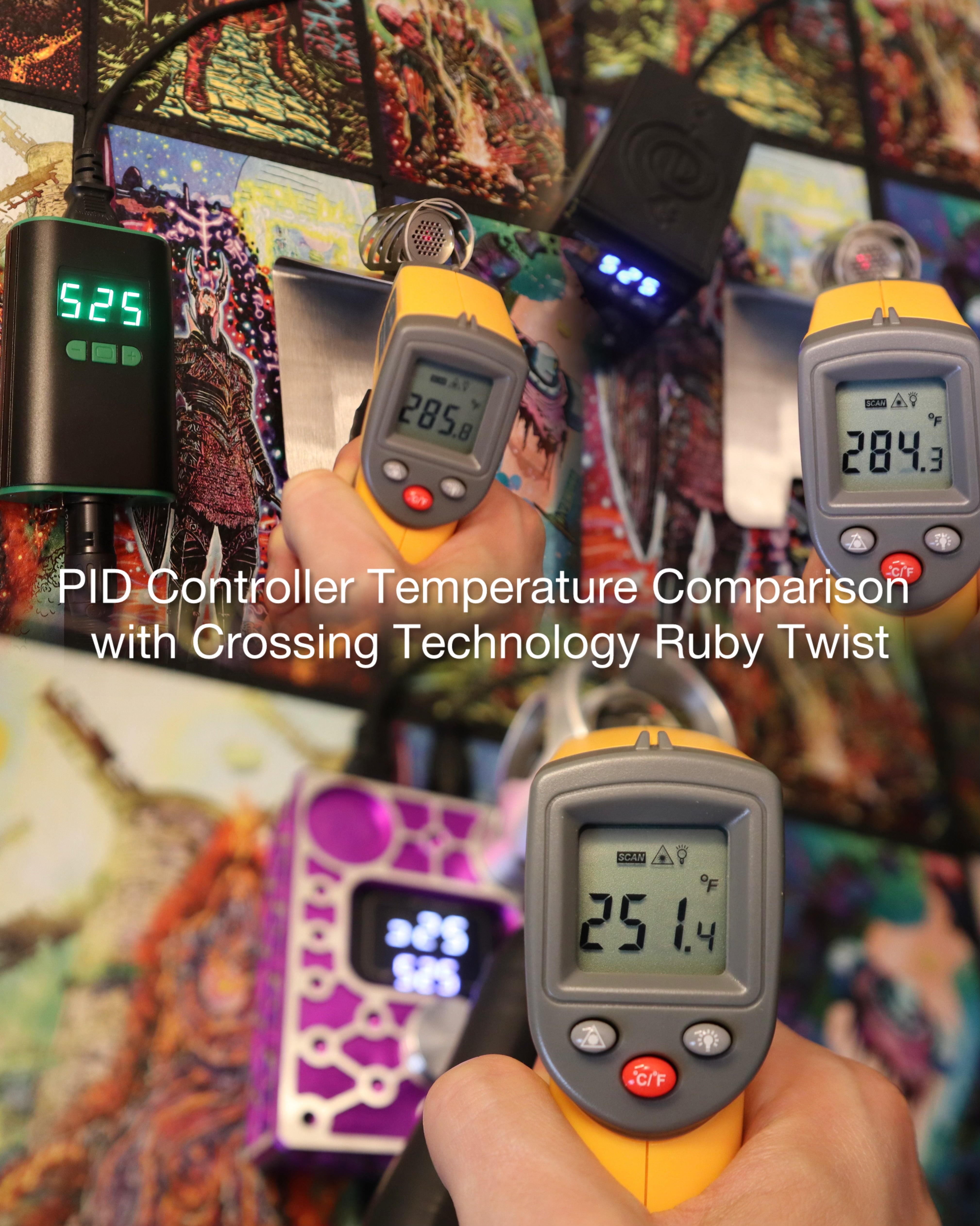
If you've ever questioned whether the temperature on your PID controller is accurate, the real answer is.....kind of! This is a good reference which should help break it all down for you.
When set to 525 for example, each brand (and even models within brands) will vary between the temperature set on the PID and the actual temperature of the head assembly inside the coil end.
There are many variables when determining a desired temperature on your setup. The glass along with its joint connection size can impact vapor airflow. 19mm is the preferred connection to allow optimum airflow while 14mm is more restricted. Other variables include the consistency of your ground material as well as your draw speed. It’s ideal to fine tune your temperature setting around your draw speed for best results.
After adjusting the heat setting on your PID, the temperature on your injector head will be considerably lower. Consider starting your initial session around 500-525 and adjust by 10 increments until you find your sweet spot that works best for you.
Some PID controllers such are known to run cooler than other brands. Disorderly Conduction tends to run a lot hotter. You may find the need to increase temperatures higher, which is not unusual. For these models we suggest starting at 550 and adjust from there.
Below are some pictures taken with an infrared thermometer pointed at the head assembly inside the coil end, which will give you an example of the actual temperature variance between brands and models, each set at 525:
Ruby Twist PID Controller by Crossing Technology (comes with Ruby Twist bundle):

Micro PID Controller by Disorderly Conduction:

The bottom line is the temperature displayed on the PID is far different than what the temperature being measured inside the coil is. This is also going to be different than the temperature of the air coming out of your ball vape going into the bowl. We don't have equipment to 100% accurately measure that but hopefully this comparison helps you understand the variables involved and the differences of how each manufacturer's PID may perform.
Thanks for reading and for supporting VGoodiEZ!

Comments (0)
Back to VGoodiez University Lesson's